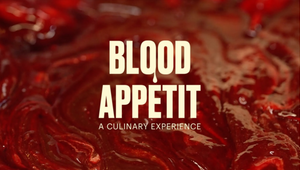
Blending Latin and American Music for Heineken’s Mexican Beer

Heineken’s beer brand Tecate is brewed proudly in Mexico - and that’s exactly what its latest spot is all about. Sporting the tagline ‘Mexico Is in Us’, the film showcases the Tecate Alta beverage and its Mexican heritage - especially through its soundtrack.
The man responsible for the music is Gio Lobato - a ‘Chicano’ himself (Mexican-American) who connected with the project and its message instantly. A composer for music and sound company duotone audio, he created an original track for the Tecate film that blends the sounds of his Latin-American influences with the American electronic music he loves to produce today.
Gio stopped for a chat with LBB’s Ben Conway to discuss the project, the nuances of marketing for Latine people in the US, and breaks down his composition in video form.
LBB> What was the brief for this project like? What inspirations and ideas did Tecate have for the music?
Gio> The main target for this ad was first and second-generation and beyond, young Mexican-Americans and Latinos. People who walk between two cultures and feel connected to both. The visuals focused on the majesty and wonder of the borderlands between Mexico and the American Southwest, and the specific flora and fauna that inhabit it.
The overall takeaway was to be modern, cool, and vibey. The Tecate team mentioned it should feel artsy and magical, poignant, and filmic, with some nice grit to temper the piece. The music had to be influenced by Mexican and Latin sounds and rhythms, but not feel too old or goofy. The track also needed to feel connected to the journey and the culture in a genuine way, and not a trope-y one. In addition, they wanted to weave sound design in a musical way.
LBB> How did you start the composition process? Did you find some sample tracks first?
Gio> I wanted to find some tracks that had a nice connection to Mexican and Latin music in general, but take them in a new direction - more modern and eclectic. I went searching and started pulling some artists that I admire, like Nortec Collective, Mexican Institute of Sound, Bomba Estereo, Balún and more. I really liked the sampling aspect that a lot of these bands have, and how they capture the dreamy and somewhat surreal visuals from the film. I think that dreamy, nostalgic, old-meets-new vibe has always spoken to me, and it speaks to the story of the piece as well, so it felt like a good fit.
LBB> As a Chicano yourself, how did you connect with this particular project? What are some of the musical styles and memories from your culture that inspire your work today?
Gio> In a lot of ways, this piece is a combination of four of my biggest music influences - all inspired by music I grew up listening to. I did a video about this [see below] but here’s a more detailed breakdown:
I think the most obvious influences in this particular track are the rhythms. The first rhythm is a cumbia rhythm, which is of Afro-Colombian origin, but has spread throughout Latin America. Each country has their own bands, styles, and approaches to it, but the beat is there and it unites it all. I grew up listening to Selena all the time, and so that rhythm is sort of ingrained into me (and a lot of people of Mexican descent) from an early age.
And then I brought in a reggaeton beat subtly at the front, as a nod to teenage Gio, who got his start in music making dembow beats on FL Studio. Obviously, the spot itself is appealing to Mexicans/Mexican Americans who are connected to their culture, but also to this culture here in the US. And there is pain and power in that connection. There’s a lot gained and a lot lost. And I feel that as a Chicano, so it was easy to connect with and try to actually celebrate that feeling of ‘ni de aqui, ni de alla’ [‘neither from here nor there’], which is so often denigrated by people inside and outside of our culture.
LBB> Have you combined your Latin music influences with American music before? What are the keys to success for blending the two seamlessly?
Gio> Yes, I actually have a music project called ‘losiento’ which is a sort of an eclectic blend of folk, electronica and Latin music influences, sung in English, Spanish, and Spanglish.
I don’t try to blend my music seamlessly with the styles I work in, and I think most successful syncretic music doesn’t, or else it ends up feeling like restaurant music. If you look at artists that do this well, it’s really about letting both styles shine, finding beauty in the conflict, and letting those clashes really delight and surprise the listener.
Lyrically, as a bilingual person, it’s really about learning to play in both languages in ways that feel fun and expressive. There are some things that are easier for me to express in one language or the other, but the real fun for me comes in finding double meanings, cultural references, and playing with the way words and ideas interact as they get translated and reimagined across languages. And I think that comes naturally to me, but I still also have to be careful that I’m saying what I actually mean, rather than just mistranslating something.
LBB> What were some of the instrumentation choices you made in the Tecate spot that pay homage to your Latin heritage?
Gio> I wanted to give a nod to the north of Mexico, that area where the border really is porous in a lot of ways. So I decided to use some horns that were reminiscent of banda, which for us in New Mexico and Colorado is a sort of dancing/wedding music, celebration music. And I twisted it and kinda made it nostalgic, which I think turned out kinda dark, but really fun.
There’s also accordion which is super integral to Tejano and New Mexican music, which I grew up listening to as well, so it’s a nod to that music that I love to this day.
LBB> You used Logic for the composition - was there any other creative tech involved? Have you been experimenting with anything fun and new lately?
Gio> There was a tonne of creative tech involved. I was creating sounds and then printing them down and twisting them, formant/pitch shifting, and treating them in all kinds of different ways to get that dreamy magical sound. There was a lot of cutting to get the rhythm feeling right and grooving in a way that felt really natural.
And then of course we actually used sound design in the music. So if you listen closely, when you see birds on screen, you’ll hear a bird screech blend into the beat, or the sound of sand blowing has been turned into a shaker. Lots of that stuff was used in this piece.
Recently I’ve been experimenting with using AI to generate samples that I then use in my music, which has been super fun. I’ve also been experimenting a lot with twisting my voice to suit the story I’m telling, rather than focusing on trying to sing myself.

[Above: Gio Lobato]
LBB> What was the hardest challenge you faced on this project and how did you overcome it?
Gio> There was just a lot going on in this project, and a lot of different things we had to try to express. We had to be careful about the rhythms, and culture, about the vibes and tone we were trying to create. And on top of that, we had to score it closely and integrate sound design. So it was a lot of work to just make sure everything was speaking loud enough, but not overpowering everything else. But that’s half the fun of music for branded content.
LBB> The Latin market is a huge sector of the US population, but doesn’t always get the attention or personalisation it deserves from advertisers - what does it mean to be part of a project that is tailored towards Hispanic people? How can advertisers improve their Hispanic representation, and do so authentically?
Gio> I think there are projects that are made for/by Latine people, and projects that are made at Latine people. Fortunately, this one is the former, and I think it shows.
It connected with me instantly, and I get the feeling that it also connected with a lot of others from similar cultural situations. So it’s always amazing to be able to do that and to shine a light on my culture, which is so beautiful and carries so many influences from so many amazing people going back thousands and thousands of years.
I think things have improved a bit, but advertising still has a long way to go. In terms of music, and media in general, there’s a real tendency to group Latine people and say we all do, and think, and listen to and like the same things. But we are not a monolithic group. A Cuban is different to a Puerto Rican, to a Venezuelan, a Mexican and a Costa Rican. We all listen to different music, eat different food and even have different dialects, - even though there’s tonnes of sharing and crossover. So it’s weird to me when advertisers kind of just pick a random style of Latin music, or instrument (or even Spanish music like Flamenco), that doesn’t match the characters' cultures, and just assume people are going to love it because of that.
You have to get people that really know the cultures that you are trying to reach out to, and listen to them when they suggest things to you, and try and celebrate the culture, rather than rip it to sell a product. That’s what makes it authentic.
On the other hand, there’s often the reaction of, ‘Well we aren’t going to use Latin music because it makes it seem like we are pandering or stereotyping’, and I think that’s just as wrong. I think we should just look at the film and see what music speaks best to the story, and let the culture influence that in a thoughtful way. If that means Latin influence, cool! If not, also cool!
Finally, Latine people are really diverse. There are indigenous, Black, White, even Asian Latine people… There are gay, trans, and non-binary Latine people. Yet we really only tend to see one type represented in our advertising, and I think that’s a shame. I think things are improving a lot, but there’s a long way to go in advertising (and our culture) in improving that representation and celebrating all of the incredible people and cultures that make us what we are. That comes from getting those people seats at the tables where the work is being made, and listening to them carefully and with an open heart.















